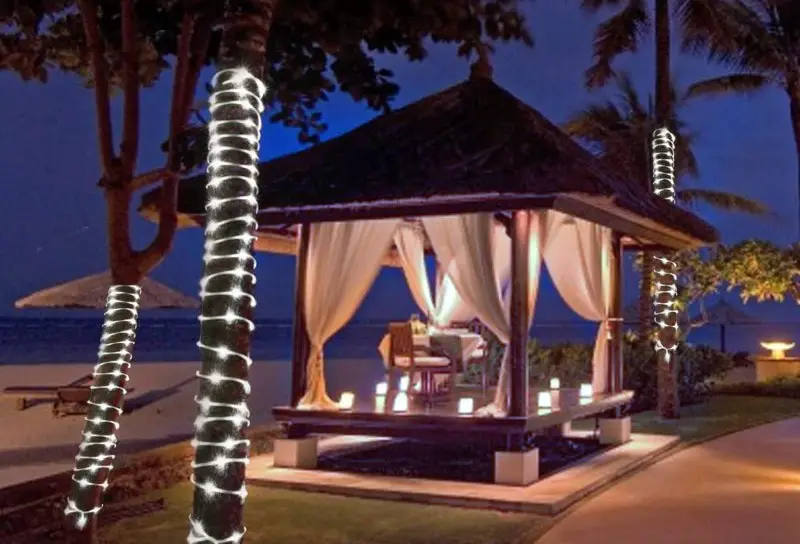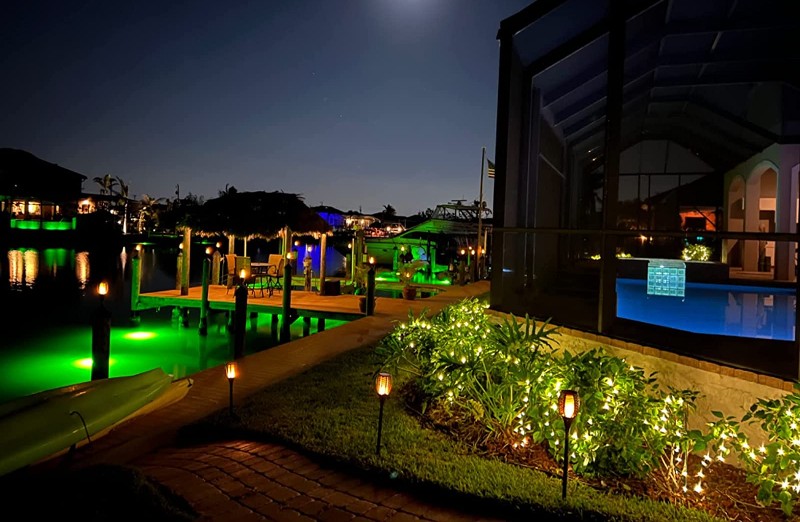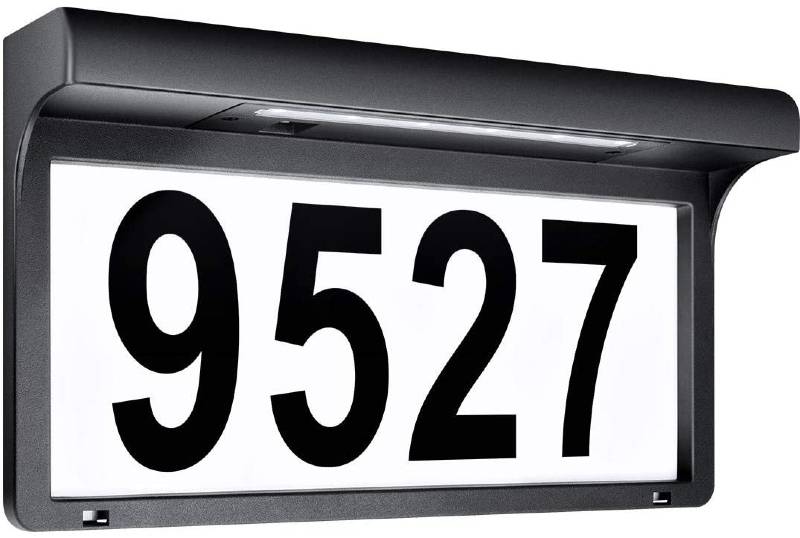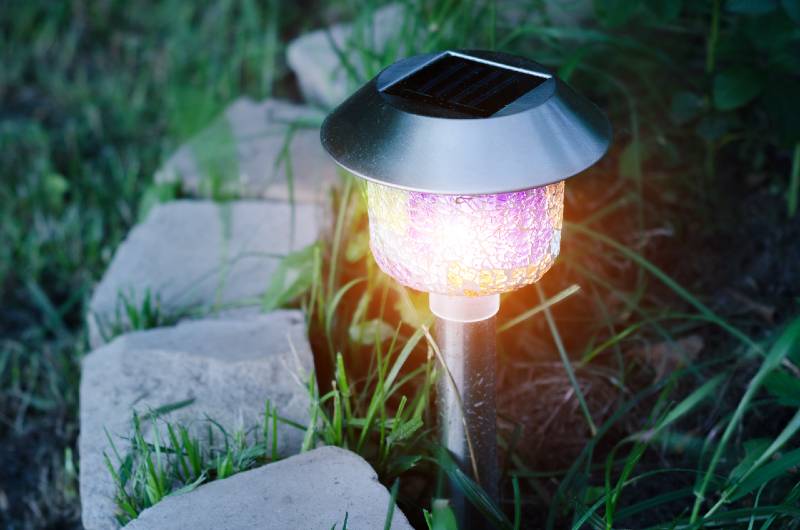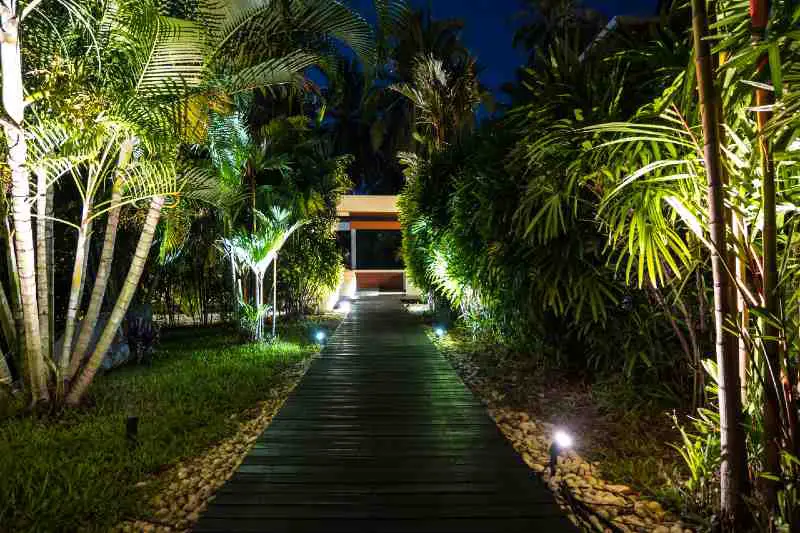Winter can be tough on solar lights because of the shorter days and less sunlight.
So, do solar lights work in winter?
But don’t worry, there are easy ways to keep them shining.
Yes, they do work, but they require a bit more attention during these months.
For example, positioning your solar lights in the sunniest parts of your yard will maximize their exposure to limited winter sunlight.
In this article, I’ll walk you through simple tips and tricks to help your solar lights stay bright and efficient all winter long.
Key Takeaways
- Solar lights can work in winter but need careful placement and maintenance to get enough sunlight.
- Solar lights use photovoltaic cells to convert sunlight into electricity, storing it in a battery to power an LED light at night.
- Cloud cover can reduce sunlight, but solar lights still capture direct and diffused light, though efficiency can drop significantly on cloudy days.
- High clouds with ice crystals can sometimes enhance solar charging by reflecting more sunlight onto the panels.
- To optimize performance in winter, place solar lights in sunny spots, adjust panel angles, use reflectors, and consider USB charging on particularly gloomy days.
How Do Solar Lights Work?
Before explaining whether solar lights work in winter, let’s break down how they generally operate.
Solar lights harness sunlight and convert it into electricity using what’s called a photovoltaic cell, more commonly known as a solar panel.
This solar panel collects sunlight throughout the day—even on cloudy days, though the efficiency might drop a bit.
The sunlight that hits the panels is turned into direct current (DC) electricity by the photovoltaic cells.
This electricity isn’t used right away.
Instead, it’s stored in a rechargeable battery within the solar light, waiting for its moment to shine.
As night falls and sunlight fades, a sensor in the solar light detects the darkness and activates the battery.
This battery then powers an LED light, which glows throughout the night using the electricity stored during the day.
The effectiveness of a solar light can depend on several factors: how much sunlight it captures, the capacity of its battery, and the quality of the solar panel.
Now, during the winter, even though the days are shorter and often cloudier, solar lights can still function effectively.
They just need a little more attention.
So, ensuring they are placed in the best possible location to catch sunlight and keep them clean and free from snow can make a big difference.
What Can Impact My Solar Light’s Performance in Winter?
1. Overcast Days
One major factor that can influence how well your solar lights perform in winter is the cloud cover.
You might worry that clouds completely block the sun, rendering your solar lights useless, but that’s not quite the case.
Solar lights are quite smart and can still capture energy on cloudy days.
They do this by absorbing not only the direct sunlight that filters through the gaps in the clouds but also the diffused sunlight that scatters throughout the sky.
So, what does this mean for your lights on different kinds of cloudy days?
Well, if it’s just lightly cloudy and you can still spot the sun, your solar lights might not take too much of a hit.
However, when the clouds thicken and the sun plays hide and seek, the charging efficiency might drop to about 50%.
On very overcast days, when it seems like the sun is on a break, the lights might only gather 20-30% of the energy they would.
And on the darkest days, like during a big storm, they might dip below 10% of their normal power, or they might not be able to charge up at all.
But here’s an interesting twist: clouds can sometimes help your solar lights charge better!
This might sound surprising, but it’s all about how clouds can sometimes act like a giant mirror in the sky.
When clouds around the sun reflect extra sunlight onto your solar panels, it’s like giving them a little energy boost.
This happens because of a phenomenon called “cloud lensing,” where high clouds act like a lens, focusing the sunlight more directly onto your solar panels.
This boost can be particularly effective if the clouds are high in the sky and have ice crystals, which intensify the sunlight.
However, this kind of boost is short-lived and unpredictable.
2. Snow Coverage and Low Sunlight
The chill of winter brings with it snow and a change in the sun’s position, both of which can affect how your solar lights perform.
When snow covers your solar panels, it can reduce their efficiency significantly.
This is because the snow acts like a blanket, blocking the panels from absorbing sunlight.
But don’t worry, this problem has a pretty straightforward solution.
Simply using solar panel cleaning tools to brush off the snow can help you regain much of that lost efficiency.
Another challenge during winter is the lower position of the sun in the sky.
This means your solar panels might not catch as many rays as they do in the summer unless you adjust their angle.
A good rule of thumb is to tilt your solar panels about 15 degrees more than your latitude.
This adjustment helps the panels to better capture the sunlight that does make it through the winter haze.
If you’re not sure about the exact angles, you can use a solar panel angle calculator specific to your state to get the most accurate setting.
Lastly, the shorter duration of daylight hours in winter also means less time for your solar panels to collect energy.
3. Shorter Daylight Hours
While you’re trying to manage snow cover and adjust the angles of your solar panels, there’s one thing about winter that you just can’t change: the shorter days.
Winter days are naturally shorter because of how the Earth tilts and orbits during these months.
This means your solar lights have less daylight to soak up the sun and charge up.
Shorter days mean your solar lights won’t get as much sun as they do in the summer, which affects how much they light up at night.
Unfortunately, we can’t stretch the daylight hours, but being aware of this can help you set realistic expectations and make some smart moves.
For instance, you can make sure your solar lights are positioned in the best spots to catch every bit of sunlight available during those shorter days.
It’s also a good time to give your panels a little TLC—make sure they’re clean and clear of anything like branches or leaves that could block the sun.
By squeezing the most out of every sunlight hour, you’ll help your solar lights perform better during those long winter nights.
How Long Does It Take for Solar Lights to Fully Charge in Winter?
To determine how long it takes for your solar lights to charge during winter fully, there are several important factors to consider.
First, understanding “peak sun hours” is crucial.
These are the hours when sunlight is strong enough to be considered at its maximum strength for the day.
However, during winter, peak sun hours decrease because the sun is lower in the sky and the days are shorter.
Next, consider the wattage of your solar panel.
This measurement, in watts, indicates how quickly the panel can convert sunlight into electrical energy.
The higher the wattage, the faster your panel can charge the battery, assuming ample sunlight.
You also need to know the capacity of your battery, typically given in watt-hours (Wh).
This figure shows how much energy the battery needs to reach full charge.
Let’s simplify this with a practical example:
Say we have a solar light with a battery capacity of 100 Wh and a solar panel that produces 40W of power.
Since I’m based in Los Angeles, California, I’ll use the average peak sun hours for this location during winter, which is about 5.03 hours per day.
To calculate the charging time under ideal conditions, use this formula:
Charging Time = Battery Capacity (Wh) / (Panel Power (W) × Peak Sun Hours)
Plugging in the numbers:
Charging Time = 100 Wh / (40W × 5.03 hours) ≈ 0.5 h
That means, ideally, it would take about half an hour to charge.
But we all know conditions aren’t always ideal—things like cloud cover, dirt on the panels, and so on can affect this.
So, we apply a derating factor to adjust for these inefficiencies, commonly about 0.86 or 86% efficiency:
Adjusted Charging Time= Ideal Charging Time / 0.86
So, using our previous calculation where the ideal charging time was 0.5 h:
Adjusted Charging Time = 0.5 hours / 0.86 ≈ 0.58 h
This means that under typical winter conditions in Los Angeles, it would take roughly 0.58 h, or about 35 minutes, to fully charge the solar light’s battery.
However, remember, this calculation is for one specific solar light setup.
If you have multiple lights or different models, each with varying specifications, you’ll need to adjust your calculations accordingly.
Why Do I Need to Clean Snow From the Solar Panel?
You need to clean snow off your solar panels because, although cold temperatures can boost their efficiency, snow does the opposite.
It blocks the light from reaching the solar cells, which stops them from doing their job-generating electricity.
So, to keep your solar panels running well in winter, you’ve got to keep them clear.
Here are a couple of straightforward ways to do that:
- Warm Things Up: Using a hairdryer or similar heating tool is a quick way to melt the snow. Just warm up the panels slightly, and the snow will slide right off.
- Spray Away: If the temperature’s not too freezing, you can use a hose to spray down the panels. The water will melt the snow away. Just double-check that your solar setup is water-resistant and safe for this kind of cleaning.
- Give Them a Sweep: For light, fluffy snow, a simple broom will do the trick. Just gently brush the snow off the panels. It’s easy and effective, especially if the snow hasn’t turned to ice.
- Apply Antifreeze: There are antifreeze products designed to melt snow quickly without you having to physically clear it. However, ensure any product you use is safe for solar panels and won’t corrode or damage the cells.
How to Get the Best Performance from Solar Lights in Winter?
1. Get Waterproof Solar Panels
To make sure your solar lights shine bright all winter, you need to ensure they’re up for the challenge of harsh weather.
While you might usually bring them inside during the cold months to keep them safe, that doesn’t mean they can’t handle the outdoors.
Many solar lights are built tough, with high-quality materials that stand up well to rain, snow, and wind.
That said, not all solar lights are created equal.
Their ability to withstand the elements varies, so you’ll want to check their weatherproof ratings before deciding whether to leave them out in the cold.
These ratings are usually marked as IPX4, IPX5, IPX6, or IPX7:
- IPX4: Solar lights with this rating are only resistant to water splashes, so it’s not recommended to leave them out in winter
- IPX5: These solar lights can withstand low-pressure water jets, so they can handle moderate rain.
- IPX6: Solar lights with this rating can withstand strong, high-pressure water jets, so they can handle heavy rain and snow.
- IPX7: These solar lights can be fully charged in up to 3ft of water for 30 minutes, making them a great option if you live in a snowy area with heavy rain.
However, even the best waterproofing can’t help if there isn’t enough sunlight to charge the lights.
If you’re facing a particularly gloomy winter, it’d be better to bring the lights inside.
This way, they won’t just sit outside without charging, and you’ll also avoid extra wear and tear.
For more information, check this article on how to improve solar light’s water sealing.
2. Place Them in Direct Sunlight
To get the best out of your solar lights in winter, you’ve got to make sure they catch as much sun as possible.
Since the sun hangs lower and the days are shorter, placing your solar lights in the right spot is crucial.
Look for areas around your yard or garden that get clear, unblocked sunlight for most of the day.
You need to avoid spots where buildings, trees, or other large objects throw shadows.
Even though the days are shorter in winter, finding a sunny spot can make all the difference.
3. Tilt The Solar Panels
Since the sun is lower in the sky during winter months, tilting your panels to face directly at the sun can increase their exposure to sunlight.
For most locations in North America, this means tilting them more steeply than you would in summer.
A good rule of thumb is to set the angle of your panels at a degree equal to your latitude plus about 15 degrees in winter.
This adjustment helps compensate for the sun’s lower position and captures more direct sunlight.
4. Use a Reflector
If the other tips haven’t quite done the trick in boosting your solar lights’ performance during the winter, why not try adding a reflector?
Reflectors help catch and bounce more sunlight right onto your solar panels.
This can be super handy on those short, cloudy winter days when every bit of sunlight counts.
You don’t need anything fancy to make a reflector.
Things like aluminum foil, shiny metal sheets, or even reflective films made for solar purposes will do the job.
Just place these materials around or under your solar panels.
Think of it like using a mirror to shine more light on something — that’s exactly what you’re doing for your solar panels.
5. Use Other Energy Sources
Sometimes, life gets too hectic to fiddle with your solar lights, especially during those short, busy winter days.
If your solar lights aren’t catching enough sun to stay lit, you can use an alternative light source or USB charging as backup options.
For example, you could add some LED lights that plug into your home’s power system.
This way, even if the solar panels don’t get enough sunlight, your yard or garden will still be well-lit.
It’s a great fix for those super cloudy days when the sun just doesn’t want to come out.
On the other hand, a lot of solar lights these days have USB ports for charging, which is super handy.
If the solar power isn’t cutting it, you can just bring them inside and hook them up to a USB charger.
It’s quick and simple, and you don’t have to worry about your lights running out of juice when you need them most.
How to Store Outdoor Solar Lights for Winter?
Although solar lights can handle winter weather, some people prefer to store them to prolong their lifespan.
If you want to store your solar lights during winter, here are a few simple tips to keep them in good shape and prevent battery damage:
- Clean Your Solar Lights: Before storing, give your solar lights a good clean. Wipe off any dirt or debris to keep them in top condition.
- Switch Them Off: Turn off your solar lights to conserve energy and protect the batteries.
- Partially Charge the Batteries: Charge the batteries to about 40%. This level of charge helps them gradually discharge during storage without damaging them.
- Remove the Batteries: Take the batteries out of your solar lights. This step is crucial to prevent any potential leakage or damage inside the lights.
- Store in a Cool, Dark, and Dry Place: Find a storage spot that’s cool, dark, and dry. This environment helps prevent any damage from moisture or temperature fluctuations.
- Use a Battery Storage Box: Place the batteries in a storage box to prevent leaking and rupturing. This will ensure they stay safe until you’re ready to use them again.
FAQs
How Can I Get My Solar Lights to Work in Winter?
To get your solar lights working optimally in winter, place them where they can soak up the most sun, and use reflectors to enhance light absorption.
Will Solar Lights Charge in Winter?
Solar lights can still charge in winter, but they may do so less efficiently due to shorter daylight hours and overcast skies.
Can You Leave Solar Lights Up in Winter?
You can leave solar lights up during winter if they have appropriate weatherproof ratings to withstand harsh conditions.
Are There Solar Lights That Work in Cold Weather?
Indeed, there are solar lights designed to function in cold weather; ensure you select models with materials rated for lower temperatures.
Conclusion
As promised, we’ve covered simple tips to keep your solar lights working well in winter.
By placing them in the sunniest spots, keeping the panels free of snow and dirt, and using a USB charger on cloudy days, you can keep them shining brightly.
Here’s a pro tip: try using a portable solar panel to charge your lights during the day.
Put it in the sunniest spot and connect it to your solar lights to boost their charge.
Got any questions?
Drop them in the comments below—I’m here to help!
Join our solar microdosing newsletter and get bite-sized, easy-to-understand insights into the world of solar energy.
From how solar panels work to building your own DIY solar system, we’ve got you covered.


